#european swamp turtles
Text

Grzimek's Animal Life Encyclopedia. Volume 6: Reptiles. Written by Bernard Grzimek. 1984. Illustration by Helmut Diller.
1.) European swamp turtle (Emys orbicularis)
2.) Painted turtle (Chrysemys picta)
3.) Caspian turtle (Mauremys caspica)
4.) Ringed sawback (Graptemys oculifera)
5.) Spotted turtle (Clemmys guttata)
6.) Spiny turtle (Heosemys spinosa)
7.) Common box turtle (Terrapene carolina)
8.) Red-eared turtle (Trachemys scripta elegans)
#reptiles#turtles#european swamp turtles#painted turtles#caspian turtles#ringed sawback turtles#spotted turtles#spiny turtles#common box turtles#red-eared sliders#Helmut Diller
282 notes
·
View notes
Note
Are there any fae-like creatures in french myths?
I know about the story of a giant black wolf that terrorized France back in the day, but that’s all I can remember.
Legends and stories including wolves are in fact really widespread in european culture since middle age ! But yeah the most well known in France is the Beast of Gévaudan which was described as massive ! (and the one from Le petit chaperon rouge/Little red riding hood)

Concerning other creatures and fairies/faes in french legends and stories, we do have
Mélusine : fairies mentioned a bit everywhere in France, they are mostly described as women with a scaly tail lower body and are sometimes associated with mermaids or vouivres. (far from how they look like in genshin impact)
Vouivre : not to be mistaken with wyverns, vouivres are creatures described as snakes with bat wings, sometimes they are depicted having rear legs and wings (and they look very goofy like that imo). These creatures can be aquatic and in some descriptions, possess a big jewel on their forehead.
Tarasque : a creature from provencal legends, which lived in a swamp near Tarascon and terrorized and ate people. It's most popular description was of a big creature with a spiked turtle shell, six bear legs, horse ears, bull chest, lion head, a human face and a twisted tail. Legend says Ste. Marthe tamed the beast. (I swear they were just being attacked by bowser this is the same creature)
These are the one I depicted roughly in the pic above but there are many more creatures depending on the different regions of France ! (There's a lot of fairies and fantasy like creature in stories from bretagne/brittany)
Some others that I find either fun or cool are :
Meneurs de loup : which translates to wolf leaders are people told to be able to talk to wolves and even transform into one, either because they are werewolves or they made a pact with the devil. (it's kinda giving spice and wolf vibes and I love that story sm)
Jambe crue/Came-cruse : Roaming in the Pyrénées at night, this thing is a single leg with an eye on the knee that eats people and runs very fast. (Idk why this one is so funny to me but oddly terrifying as well)
#french folklore#we also have fairies and mages that come from arthurian legends because i don't know how/why but some of the stories took place in france#it is said in France that Merlin used to live at some point in the forest of Brocéliande that is said to be either in brittany or normandy?#and there's that whole lancelot du lac thing as well#idk if I can choose a favorite creature in general french or not but kelpies are cool and rusalkas as well#medieval unicorns that look more like goats are dope as well#most man eating beings or creatures that use appearances to lure people are soo cool tbh#katsura otoko is an example from japanese folklore guy on the moon that feeds on your life essence the more you stare at the moon#if i recall it right..#Oh ! and Powerwolf did a song in french about beast of gevaudan ! if anyone likes power metal#the whole band’s aesthetic is priest werewolves idk why but hey half of it is right in my alley
66 notes
·
View notes
Photo
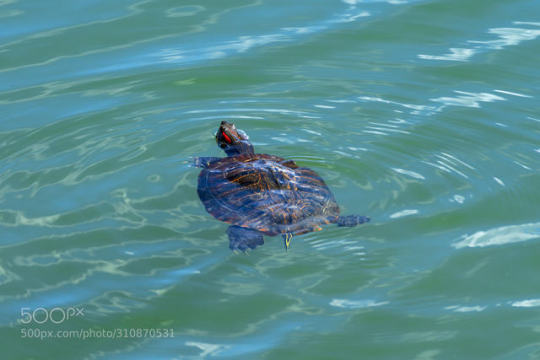
Turtle on the city pond by jukejuke1310
1 note
·
View note
Text
Crocodiles vs. Columbus and Sir Francis Drake
“... very vgly and fearefull beasts to behold ... strawnge kindes of beastes ... There weare Crocadiles which did Incounter & fighte with vs ...”
The Cuban crocodile (Crocodylus rhombifer) is now near extinction, critically endangered, with less than 3,000-ish alive in the wild, surviving only in a small population at Zapata Swamp (Cuba) and a single island offshore.
But it turns out that the Cuban crocodile used to live across Cuba and also elsewhere nearby in the Caribbean, including the Bahamas and the Cayman Islands. European settlers arrived and killed most of the crocodiles within the past few centuries. (Although the larger American crocodile, Crocodylus acutus, still lives on the saltwater and estuarine shores of some of the Cayman Islands, recent re-evaluation of fossils and colonial records show that some crocodiles living on land or at inland sites were probably Cuban crocodiles.)
This was neat: Gary S. Morgan and Nancy Albury. “The Cuban crocodile (Crocodylus rhombifer) from late Quaternary fossil deposits in the Bahamas and Cayman Islands.” A bulletin of the Florida Museum of Natural History from 2013.
Check out some of the first European descriptions of the crocodiles. Excerpt:
-------
This species [Cuban crocodile; Crocodylus rhombifer] survives today only in Cuba and Isla de la Juventad [...]; the populations in The Bahamas and Cayman Islands are locally extinct. [...] In his diary (diario), Christopher Columbus reported the capture of a 5.7 foot crocodile in a freshwater lagoon on Crooked Island (Bahamas) in October 1492, and Martin Alonso Pinzon, captain of the Pinta, killed a second crocodile of similar size on Crooked Island the next day [...]. The historical occurrence of crocodiles in the Cayman Islands has been of great interest to herpetologists, paleontologists, and historians alike, as the name of the island group suggests the former presence of crocodiles despite their current absence there. The Spanish word caiman (from the Carib cayman) is one of several terms applied to tropical American crocodylians. The Spanish name for the island group is Islas Caiman or roughly translated as “Crocodile Islands.”
The earliest historical documentation of crocodiles in the Cayman Islands was in 1586 on one of Sir Francis Drake’s West Indian voyages. The following historical quotes are presented exactly as they appear in Drake’s original journals (abstracted from Keeler 1981) [...].
A quote from Drake’s journal (from Keeler 1981:68; called the “Map Text”) is as follows:“The 20 of Aprill [1586] ve fell with two Ilands called Caimanes, vhere we refreshed our selues with many Allagaitas [alligators] and greate Turtoises [sea turtles], being very vgly and fearefull beasts to behold, but we made good meate to eate ...” This same quote with slightly different word usage has also been attributed to Walter Bigges (1589). [...]
A third account of Drake’s same 1586 visit to the Cayman Islands stated the following (in Keeler 1981:203-204; called the “Primrose Journal”) “... the xxij [actually the 20th] of Aprill [1586] we fell with an Ile that had no people in hit. There wee fownde strawnge kindes of beastes & killed more than xx [20] Alligatos [alligators]. Those bee suche serpentes as have bin in London to be seene. There weare Crocadiles which did Incounter & fighte with vs, they live bothe in the sea & on lande. We tooke divers & made verie good meate of them; some of the same weare ten foote in lenghte.”
“Allagaitas,” “Alygathaes,” and “Alligatos” are archaic English spellings of alligator but almost certainly refer to a crocodile. [...] This is consistent with the abundance of fossil crocodiles on Grand Cayman [...]. In his history of Jamaica, Edward Long (1774) noted that crocodiles were living on Grand Cayman. These historical records document that crocodiles inhabited Grand Cayman until at least the late 18th century, after which they apparently were eliminated by European colonists. [...] Moreover, the widespread occurrence of fossils of Crocodylus rhombifer [the Cuban crocodile species] on Grand Cayman discovered since 1979 confirms the historical accounts that documented the abundance of crocodiles on the island when European explorers first arrived in the 16th century.
[End of excerpt.]
-------
“... There weare Crocadiles which did Incounter & fighte with vs ...”

107 notes
·
View notes
Text
Flora and Fauna of Ard-galen
I originally had only the flora posted separately but I wanted to post this together for convenience and to add to the flora!
Flora and fauna of Arda masterlist
Originally requested by @polutrope
Disclaimer: I used both what we can extrapolate is likely indigenous to the region based on descriptions of the landscape and climate as well as my own headcanons and inspirations and reference books on similar habitats as well as books like The Atlas of Middle Earth and The Flora of Middle Earth
I really love working on and researching these! and as always feel free to ask more, even if I've already done a place I'd always enjoy going into more detail of tacking a more specific kind of life there
Ard-galen was the vast, green plains south of Angband and North of Dorthonion. It translates to Green Region in Sindarin. Little description is given to the details of its climate or biodiversity but based on its location and proximity to Dorthonion, it was likely a temperate region with cold seasons especially due to the proximity of the mountains.
The grasslands would be made up of a variety of grasses and other plants and would probably include fens, other areas of more moisture. Timothy grass, green foxtail, windgrass, larkspur, blue grass and other meadow grasses, sedge, cow vetch, yarrow, various brambles, wood reed, meadowsweet, marsh yellow cress, meadow rue, wild mustard, clover, and dog violet are all possible examples.
Dotted throughout the region there are probably streams including those that originate in the mountains. Wood sorrel, floating sweet grass, marsh bedstraw, soft rush, and various reeds may be found closer to the water
A variety of wildflowers also probably grow throughout. Goldenrod, certain species of lilies, summer pheasant’s eye, mayweed, cornflower, poppies, campion, and pilewort are all possible examples
Amphibians are likely more abundant than in Hithlum or Dorthonion due to the milder climate. Possible species include the moor frog, stream frog, marsh frog, perhaps a species of small tree frog (though of course these wouldn’t live in trees mostly, more likely smaller shrubs), smooth newt, brook salamander and alpine newt. Reptiles are less common. Pond slider turtles, common wall lizards, meadow lizards and perhaps small green grass snakes are among the few species.
Birds also differ than in surrounding regions because of the different type of landscape. Some examples include quails and peasants, stone curlew, kingbirds, gray, brown and woodchat shrikes, grasshopper warblers, yellowhammers, buntings and red footed falcons.
Larger mammals are uncommon though some do pass through along migration, grazing or hunting routes. Perhaps the fields of Ard-galen are included in the migration routes for woolly rhinos or another large, prehistoric creature.
Common rabbit, a species of badger, field mice, hazel dormouse, swamp cat and (European) wild cat, common genet, roe or fallow deer, and black foxes are some possibilities.
Even short lists of insects can be overwhelming but there are definitely pollinators like honey and bumble bees, wood white and small copper butterflies, etc.
I do like to think that perhaps creatures do adapt to the landscape once the worst of the toxins clear including creatures that have previously favored Angband for the volcanic landscape. I think life adapting to the destroyed land fits very well with other themes, including the Haudh-en-Nirnaeth regaining plant life in the middle of the desert.
note: of course this is just an overview as a complete list would be thousands and thousands of species! as always feel free to request more specific areas!
24 notes
·
View notes
Text
soo a little bit about the fanclans i use in my books ♡ im noting here that if anything seems off we're gonna blame the tumblr mobile ai ;; constantly warping to the end of the page, trying to delete paragraphs instead of just...select a few words tumblr p l e a s e relax
im also working on a visual map for these clans, but i havent the slightest idea of how to make maps so it's uh . . . it's a work in progress xx
Note: Organisms found in the territories are influenced by both European and North American wildlife and plants, so they are not limited to any specific region, though I've tried to keep it somewhat accurate.
☆ The Gorge
>> One of the five groups of cats that call themselves Clans. They chose their current name from whence they reside—in a cave system above a sheer gorge on the outskirts of Clan territory. Super original, right?
>> Past Name: MistClan
>> Current Leader: Deadeye
>> Past Known Leaders: Crowstar, Shadestar
>> Their training is unlike the other Clans. They are extremely strict with their apprentices, often not even allowing them to attend Gatherings or speak out of hand. Mistakes are met with serious consequences.
>> Camp: Located at the far south of their territory. On the cliffside, there are steep ledges leading down into a complicated cave system that serves as their camp. In the center of the main cave is the Smoothstone, which is a hollowed out, massive stone that serves simultaneously as the leader's perch and den.
>> Territory: The territory is notably rocky almost all over, though it's also consistently forested.
>> Landmarks: Boulderdrop (dangerous rocky outcrop to the east, often used for training). Twoleg nests beyond the eastern border.
>> Typical Physique/Traits: Considering the cats of the Gorge are cats from all the Clans and rogues—some stolen as kits, some the result of forbidden or hidden relationships, some taken in with the desire to be stronger—the builds of these cats are extremely varied, though their nighttime eyesight is incredibly enhanced due to their life inside the caves.
>> Prefix Conventions: As stated above, the Gorge turned into a kind of melting pot of cats from all Clans, and as a result they don't follow much of a pattern with naming conventions—especially considering they often change their names when they receive notable battle scars (Deadeye, Hawkscar). However, they occasionally take influence from plants and critters in their territory, especially cliff- and cave-dwelling flora and fauna such as Aster–, Lichen–, Eagle–, Falcon–, Bat–, Poppy–, Moss–, Spider–, or Ivy–
◇ SwiftClan
>> Current Leader: Fishstar
>> Past Known Leaders: Ivorystar
>> Camp: Between several of the hills, there's a large area where the gorse is especially thick, along with some divets in the hills that make up the dens. It lies in the heart of the territory.
>> Territory: Much more barren than most of the other Clans, though not quite as barren and uninhabitable as BlazeClan; it's a very marshy moorland. The wind hits hard, and the bogs stay nasty and cold most of the year. Many invaders and trespassers often end up stuck in the sticky bogs, and the cats of SwiftClan are known to only save them if they agree to leave the territory.
>> Landmarks: Fallen, partially rotted tree stuck in the bogs by the southern border with the Gorge.
>> Typical Physique/Traits: Cats from SwiftClan tend to be very lanky and long-legged as a result of their lives running along the moorland. In addition, their paws are said to be slightly webbed to help them navigate the marshes in their territory without getting stuck in the mud and bogs.
>> Prefix Conventions: Cats in SwiftClan are more accustomed to the boggy moorlands, and therefore tend to name their kits after plants and terms more applicable to their territory. Prefixes tend to follow themes like the following: Bog–, Marsh–, Swamp–, Mire–, Moss–, Juniper–, Owl–, Cypress–, Adder–, Snake–, Ash–, Elm–, Frog–, Sedge–, Cotton–, Plover–, Bracken–, and more!
♤ NightClan
>> Current Leader: Harestar
>> Camp: In the heart of the territory, there is a massive oak tree that shelters the camp. Their dens are among several uplifted roots, and several boulder piles that they've collected over time. Like BlazeClan, they've learned how to weave together plants, though they use more ferns along with brambles. Beneath the common mossy nest is a layer of pine needles, carefully layered for extra cushioning. The camp is protected like a fortress by thick, woven walls of brambles and bushes.
>> Territory: Very thickly forested area, both pine trees and oak trees. On the east, the river marks a small portion of their border with RushClan. In the west, near SwiftClan territory is an area where Twolegs often come camping. They often bring dogs that have gotten loose in the past.
>> Landmarks: Twoleg camping at the western border, near their southern border with SwiftClan
>> Typical Physique/Traits: Life in NightClan isn't nearly as demanding as the others, so their traits aren't usually so defined. It's not uncommon, however, for them to be notably large-pawed and long-furred, or for them to have plants stuck in their fur.
>> Prefix Conventions: The forest they live in is thick with trees and rich with all kinds of life. Almost anything you'd see in a thick forest could be found here, and their naming conventions often take many plants and animals into mind: Coral–, Bell–, Wren–, Warbler–, Thyme–, Deer–, Doe–, Fern–, Pine–, Skunk– Oak–, Holly–, Weasel–, Sorrel–, Dove–, Needle–, Clover–, Kestrel–, Thorn–, Newt–, Robin–, Mint–, and Thistle–.
♧ RushClan
>> Current Leader: Kinkstar
>> Camp: The camp lies on a strip of land over the river, and said river is often used as protection against invasions or attacks from other Clans. The leader's den is wedged underneath a series of sturdy sunning stones in the center of the camp; while most Clans consider their meetings and announcements to be formal, RushClan cats often relax on the sunning stones while their leader gives announcements from atop the highest one.
>> Territory: Not as thickly forested as NightClan, but still quite forested. A large river runs through the heart of their territory, leaving their bellies full on the many fish that thrive there.
>> Landmarks: On the western side of the river lies a large treebridge; on the eastern side, there are multiple stepping stones. Both landmarks serve as an escape route in the case of an emergency, though most cats know how to swim.
>> Typical Physique/Traits: Because of their fish-based diet, many cats of RushClan are notably sleek-furred, but they're also incredibly lean due to their comfort with swimming in the river. Most have rounder faces and ears, though it isn't uncommon for them to have unusually long tufts of fur on their cheeks, chins, or ears. Like SwiftClan, it's also rumored that these cats develop something similar to webbed paws to help their swimming.
>> Prefix Conventions: Many naming trends in RushClan tend to follow water-based ideas or comparisons, such as: Salmon–, Reed–, Eel–, Spruce–, Duck–, Birch–, Pike–, Turtle–, Newt–, Willow–, Minnow–, Frog–, Lily–, Tadpole–, Aspen–, Snail–, Pond–, Perch–, Otter–, Trout–, Heron–, and Dragonfly–
>> Special Notes: RushClan medicine cats will use water lily roots to help treat swollen limbs and may sometimes trade it to the other Clans for other herbs!
✧ BlazeClan
>> Current Leader: Heatherstar
>> Camp: A circle of huge, sharp, skyward-reaching stones forms the walls of the camp. Along the tallest of these formations, a small ledge leads up until it reaches an overhanging cliff. On this cliff is a cave; the leader's den.
>> Medicine den is half-cave. Stone in the back with large crevice for herb storage; "shelf" ledges on outside of stone for prebundled herbs. Ceiling is brambles and thick leaves interwoven. Far back corner is a pool, with brambles woven at the source of water to manage its flow.
>> Many of their dens are woven together in the same fashion as stated above, utilizing the dry shrubbery that litters their territory.
>> Territory: Mostly barren, sandy, and rocky territory. There are several grassy patches here and there, along with smaller, bare trees, though they're few and far between. At the far eastern edge of their territory lies a small town with Twoleg structures.
>> Landmarks: Abandoned Twoleg structure near the southeast border; very old and made of stones and bricks. Beyond the east border are clusters of Twoleg nests.
>> Typical Physique/Traits: Due to recent attacks and territory loss to the Gorge, many cats, while very muscular, are becoming very gaunt. Usually, the cats are seen as very broad-shouldered and strong, with angular faces and tough, calloused paw pads accustomed to their harsh, sandy territory. Cats whose fur blends into this environment are more often than not used on hunting patrols.
>> Prefix Conventions: Due to the dry and degraded land that makes up most of BlazeClan territory, their naming traditions might be some of the most unique. Plants and animals that thrive easily in sandy soil are more common here, so their common prefixes follow a similar pattern: Sand–, Sage–, Wild–, Iris–, Fern–, Beetle–, Yarrow–, Poplar–, Ant–, Cedar–, Lizard–, Newt–, and occasionally Larch–. Because of their limited fauna and flora, they've become creative with their names, featuring prefixes like Bounce–, Fir–, Pounce–, and Talon–, or names of things they hear in stories from traveling loners!
♡ Sacred Spots
Starfalls ;; A clearing north of the RushClan and NightClan borders. There's a pond that reflects the light of the moon, with a series of waterfalls falling down ledges until it reaches the pool. Because of the waterfalls, mist shrouds the clearing and nearby forest, sparkling in the light of the moon, as if it were tangible starlight.
The Gathering Stones / Tallrock ;; Massive ancient boulder among other smaller boulders in a dirt/sandy clearing, with many large trees and overgrown plants bordering the clearing.
#warrior cats#warriors fanclan#warriors fandom#warriors fanfic#erin hunter#warriors#warriors designs#wcttoc
6 notes
·
View notes
Photo
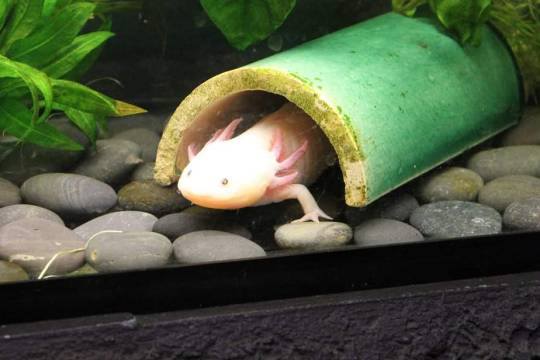
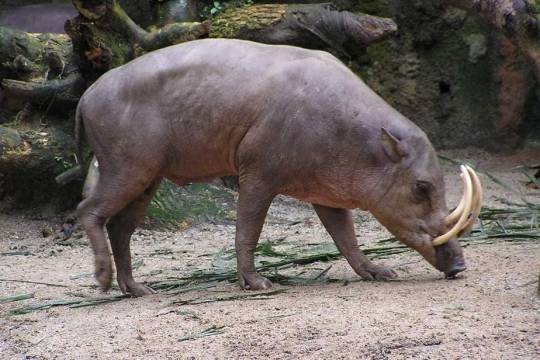
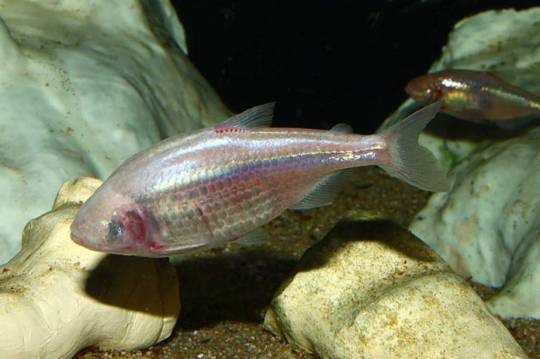
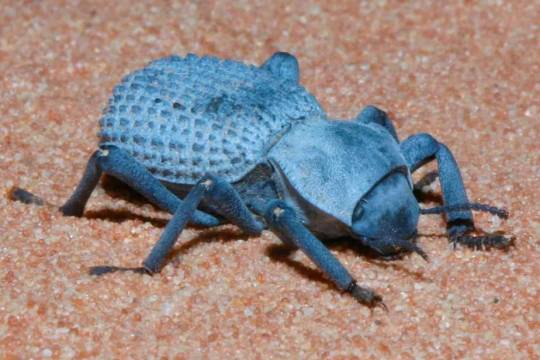
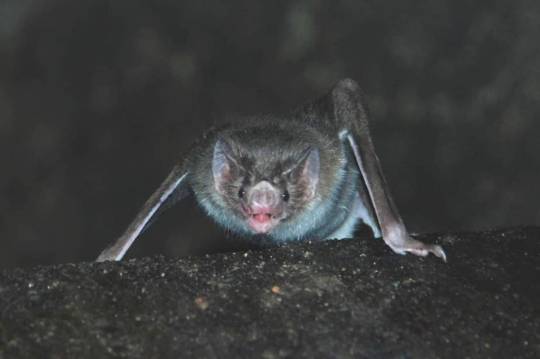
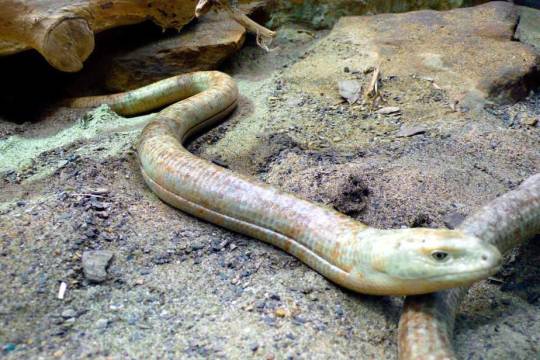


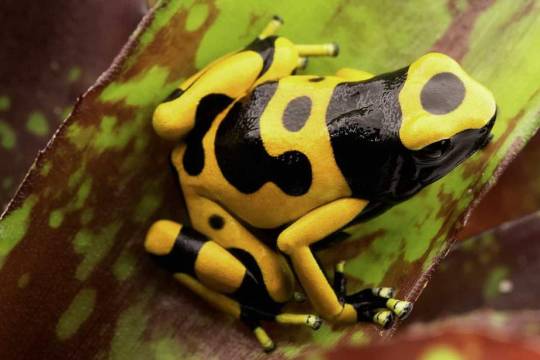
https://www.ravereviews.org/travel/50-best-zoos-and-their-weirdest-animals/
Native to Mexico, Blind Cave Fish find their way around by means of lateral lines running along the lengths their bodies. The lines are highly sensitive to fluctuating water pressure. However, not all forms of Cave Fish are truly blind: some have degenerated sight and some are totally blind, while still others have lost their eyes completely.
About 30 populations of Blind Cave Fish are known, dispersed over three geographically distinct areas of Mexico. At least three have full cave forms—blind and without pigment. Another eleven known species have cave, “normal,” and intermediate forms. At least one species has both cave and “normal” forms but no intermediates. Different forms can interbreed, making this species ideal for studying convergent and parallel evolution, regressive evolution in cave animals, and the genetic basis of regressive traits. This, combined with the ease of maintaining the species in captivity, has made it the most studied cavefish and likely also the most studied cave organism in the world.
Say it with me now: aposematic. It’s just a big word meaning that when it comes to the natural world, bright colors often signal danger. This is the case with the Poison Dart Frog. Native to tropical Central and South America, these species are diurnal with brightly coloured bodies. These mostly small amphibians are often called “dart frogs,” due to indigenous peoples’ use of their toxic secretions to poison the tips of blowdarts (though this practice is much rarer than popularly believed). Poison Dart Frogs are dedicated parents, raising their young in secluded, watery nurseries. They mate much like fish: Females deposit the eggs and the males fertilize them. While they’re occasionally seen clutching one another, these are usually territorial wrestling matches between 2 males.
If you’re anything like us, there’s nothing particularly common about a vampire bat. Found all over the Americas, the Common Vampire Bat is rare among bat species because it has maintained the ability to run on land and has relatively good eyesight. They have a unique, bounding gait when they do run. The forelimbs are used instead of the hindlimbs to propel forward, as the wings are much more powerful than the legs. Feeding mostly at night, Common Vampire Bats eat primarily mammalian blood. Their most common food sources are cattle and horses, but they’re also known to go after wild prey like the tapir. However, they do seem to prefer domesticated animals, favoring horses over cattle, and female animals over males (particularly those in estrus).
Also known as the Mexican Walking Fish, the Axolotl is actually a salamander. Native to Mexico, Axolotls are unusual among amphibians because instead of developing lungs and taking to the land, adults remain aquatic and gilled. Axolotls were sold as food in Mexican markets and were a staple in the Aztec diet. The coolest thing about Axolotls is their regenerative abilities. They are capable of regenerating lost appendages in a period of months. Some have even been found restoring less crucial parts of their own brain. They can also accept transplants from other Axolotls, including eyes and parts of the brain. Axolotls are used extensively in scientific research because of their unique healing abilities.
Matamatas inhabit slow-moving blackwater streams, stagnant pools, marshes, and swamps in northern Bolivia, eastern Peru, Ecuador, eastern Colombia, Venezuela, the Guianas, and northern and central Brazil. Strictly aquatic, Matamata Turtles are large with an oversized triangular head. The unusual head also has distinctive flaps of skin and a horn on its long snout. A Matamata’s shell resembles a piece of bark, and its head mimics fallen leaves. As it lays motionless in the water, skin flaps enable the turtle to blend into the surrounding vegetation until a fish comes close. Then the Matamata thrusts open its large mouth as wide as possible, creating a low-pressure vacuum that sucks prey into its mouth. This is known as suction feeding. After snapping shut its mouth, water is slowly expelled, and the fish is swallowed whole. Matamatas cannot chew.
The Komodo Dragon, also known as the Komodo Monitor, is found in the islands of Indonesia. These predators truly look like relics from the age of dinosaurs. Komodos are the largest living species of lizard, growing to a maximum length of up to 10 feet. In rare cases, they can reach up to 150 lbs. A nightmare with scales! The unusually large size of the Komodo Dragon has been attributed to island gigantism, with little competition from any other carnivores. Komodo Dragons dominate their ecosystems. They’ve even been known to attack humans. They hunt by ambushing prey including invertebrates, birds, and mammals. They have glands in their lower jaw which secrete several toxic proteins, shown to contain anticoagulant properties. Komodo Dragons also hunt in groups, a rare behavior in the reptile world.
The Desert Ironclad Beetle, or Blue Death-Feigning Beetle, is native to the deserts of the southwestern United States. It has been known to feign death when threatened. They’re actually popular pets due to ease of care, hardiness, and longevity. The powdery blue coloring of these beetles comes from a wax secreted throughout their bodies that keeps them from losing moisture. They cannot climb on smooth surfaces (plastic or glass). As pets, these insects require little to no additional heat or humidity. They need dry sand, something to hide in, and not much else. They don’t drink water, sourcing hydration from foods such as apples. They can even eat dog and cat food.
Native to the islands of Indonesia, Babirusas were once used as gifts to royalty. Their preferred habitats are tropical rainforests along riverbanks. While related to pigs, Babirusas do not dig with their snout like other pigs do (except in mud and swampy grounds). The diet of the Babirusa includes leaves, roots, fruits, and animal material. The strong jaws of a Babirusa are capable of easily cracking hard nuts. Male Babirusas tend to live solitarily while adult females and their young are found in groups, which can number up to about 80 individuals. The tusks of adult males are used to fight: Upper tusks are for defense while the lower are offensive weapons. If the tusks aren’t ground down regularly, they can eventually grow so long that they penetrate the animal’s own skull.
The Legless Lizard, also commonly called Pallas’ Glass Lizard or the European Legless Lizard, is found from southern Europe to Central Asia. They can reach lengths of nearly 5 feet. They are tan colored, paler on the ventral surface and the head, with a segmented appearance that makes it look like a giant earthworm. They aren’t truly legless. Small rear legs are sometimes visible. Though the legs are barely discernible, the Legless Lizard can be quickly distinguished from a snake by its ears and eyelids.
2 notes
·
View notes
Photo
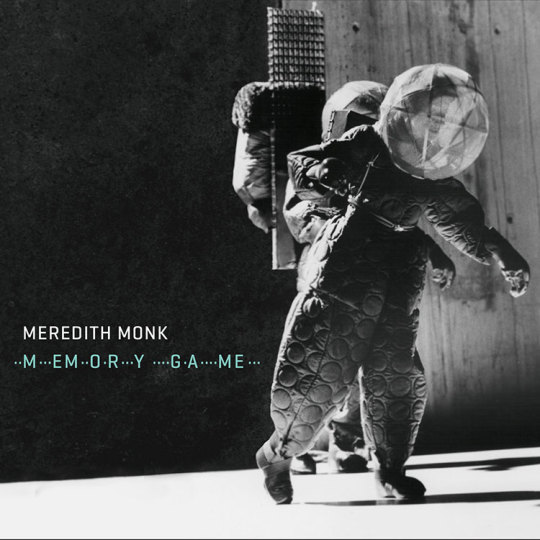
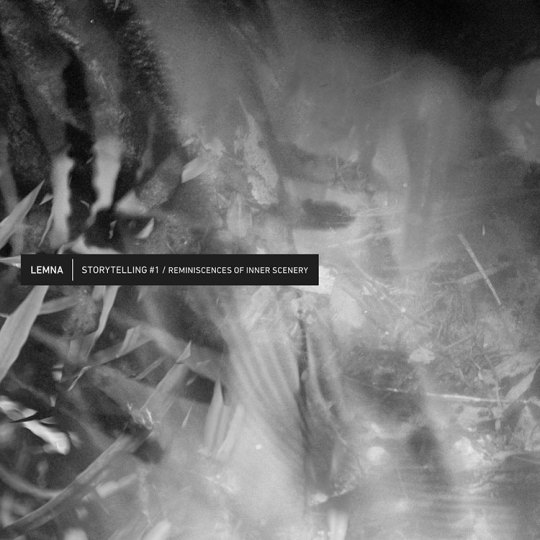


April 2020 music reviews,
or, music I enjoyed in previous weeks
L. Fairon
Meredith Monk & Bang on a Can All-Stars – Memory Game (2020)
Lemna – Storytelling #1 (2020)
Beatriz Ferreyra – Echos+ (2020)
DakhaBrakha – Alambari (2020)
Meredith Monk & Bang on a Can All-Stars – Memory Game (Cantaloupe Music)
https://bangonacan.bandcamp.com/album/memory-game
Memory Game is a revivification of some previously published works – including pieces from the Do You Be (1987) and Impermanence (2008) albums, among others –, plus selections from The Games, an unreleased sci-fi opera co-created with Ping Chong and performed in Berlin in 1983. But what seemed at first a kind of retrospective album, in fact embodies everything we love about Meredith Monk: a dedicated vocal ensemble specially trained to her repertoire, incredibly moving songs and lyrics, interesting arrangements and a great instrumental accompaniement by classically-trained players. Indeed, NY contemporary music ensemble Bang on a Can bring their rhythm accuracy and instrumental prowess to the project – electric guitar and clarinets are especially great. The vocal trio around Monk is also totally convincing. And then there are the songs themselves: disarmingly simple, unbelievably sad or full of gaiety, based on basic English words (or occasionally German), embarking casual conversation or cabaret song, onomatopeia, child babble or bird imitation – at the end of the sublime Memory Song, for instance, Monk ullulates like a flock of cranes in the sky to devastating effect for this listener. Granted, the album lacks an 18mn mothership ala Turtle Dreams, and the instrumental opener is but a distraction, but apart from these quibbles, the album is just fantastic.
Lemna – Storytelling #1 (Horo)
https://lemna.bandcamp.com/album/storytelling-1-reminiscences-of-inner-scenery
Oneiric, intricately crafted miniatures for electronic sounds by Japanese composer Lemna aka Maiko Okimoto. Usually avoiding regular rhythms or beat, the music is based on sequences of a few highly filtered notes slowly creeping back and forth, while undescript white noise agitation is obsessively crawling to reach the surface. Lemna is interested in timbres and tones, their proximity, homophony or dissonance. Her music is an exploration of the surreal and the hypnagogic – the album is said to have been recorded during insomnia nights. Reverb is used to mingle sounds together and blur their individualities, while a minute attention to details in the sound processing and the arrangements ensure that the small tickling sounds reach out amid a sea of shifting tonalities. Storytelling #1 is a long album at 70+mn, but Lemna manages to captivate the listener throughout this well thought-out collection of tracks.
Beatriz Ferreyra – Echos+ (Room40)
https://room40.bandcamp.com/album/echos
Archival material from Argentine-born Beatriz Ferreyra – a member of the INA-GRM from 1963 to 1970. Dating from 1978, 1987 and 2007, these pieces complement our knowledge of this fine musique concrète composer. With the various tracks already published by Fylkingen in 1977, Mego in their Recollection GRM series in 2012 and 2015, and her synth+tape recorder duo with Christine Groult on Trace Label in 2015, we're slowly gaining a more accurate view of Ferreyra's œuvre and individuality. Openner "Echo – In Memoriam Of Mercedes Cornu", a piece from 1978, is a poignant tape collage based on a unique sound source, that of Ferreyra's late niece Mercedes talking and singing. Vocal excerpts are subject to collage, superposition, accumulation, plus various sound effects and tape manipulations of the analog domain. Dating from 1987, the second piece uses the composer's own voice, heavily manipulated to create disembodied choirs, grotesquely elongated syllables and onomatopeia. Titled "L'autre ... Ou Le Chant Des Marécages" [Otherness... or, the Swamp Chorus], the track presents Ferreyra's poetic and phantasmatic vision of sound poetry. With #3 L'autre Rive [The Other Shore], from 2007, Ferreyra added computer and synthesizer to her beloved tape recorder. The music is much more abstract here, based on a diversity of artificial sounds and electronic textures, plus occasional percussion samples used to great effect. A lively, almost restless piece, with internal dynamics that catches the attention. Generally speaking, Ferreyra's poetry and individuality shines through these fine works of musique concrète, though I can't help thinking she stays too much within the limits of the INA-GRM canon.
DakhaBrakha – Alambari (self release)
https://dakhabrakha.bandcamp.com/album/alambari
New album by Ukrainian folk & jazz quartet DakhaBrakha, dominated by the splendid voices of Olena Tsybulska, Iryna Kovalenko and Nina Garenetska, also doubling on cello, piano, percussion, etc, and all brilliant, classically-trained multi-instrumentalists by themselves. The inspiration for each track is stylistically varied, based on lullaby, ballad, folk and traditional or jazz, and is peppered with scat vocals, slap bass, cabaret song or Serbian turbo-funk elements, delivered in playful arrangements. But the vocals dominate here, with their exquisite vibrato and beautiful, Eastern-European female timbres, soloing, alternating or singing in unison. To us Westerners, the group singing is occasionally reminiscent of 1980s Bulgarian choirs. The man of the band, Marko Halanevych, also contributes vocals as a counterpoint to the women's section, and provides great accordion accompanyment. I found Nina Garenetska particularly impressive on cello throughout the entire album. Incredible traditional reed instrument solo (the zhaleika) by Iryna Kovalenko on track #5 Torokh.
11 notes
·
View notes
Text
Rupelramphastoides knopfi
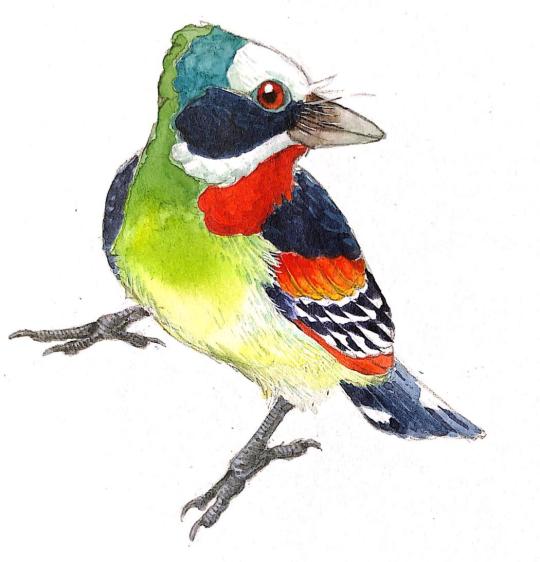
By Ripley Cook
Etymology: Barbet from the Rupelian
First Described By: Mayr, 2005
Classification: Dinosauromorpha, Dinosauriformes, Dracohors, Dinosauria, Saurischia, Eusaurischia, Theropoda, Neotheropoda, Averostra, Tetanurae, Orionides, Avetheropoda, Coelurosauria, Tyrannoraptora, Maniraptoromorpha, Maniraptoriformes, Maniraptora, Pennaraptora, Paraves, Eumaniraptora, Averaptora, Avialae, Euavialae, Avebrevicauda, Pygostaylia, Ornithothoraces, Euornithes, Ornithuromorpha, Ornithurae, Neornithes, Neognathae, Neoaves, Inopinaves, Telluraves, Afroaves, Coraciimorphae, Cavitaves, Eucavitaves, Picocoraciae, Picodynastornithes, Piciformes, Pici, Ramphastides?
Status: Extinct
Time and Place: Between 31 and 30 million years ago, in the Rupelian of the Oligocene of the Paleogene


Rupelramphastoides is known from the Bott-Eder Grube-Unterfeld Quarry of Baden-Württemberg, Germany
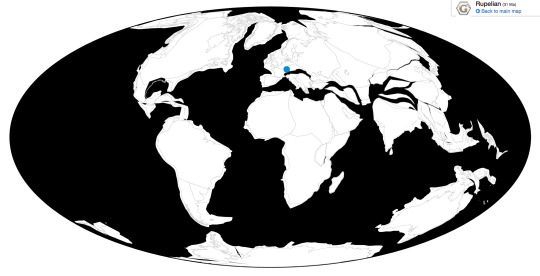
Physical Description: Rupelramphastoides is the oldest known barbet-like bird - the barbets being a group of tree-dwelling birds that includes the iconic Toucans, though most barbest don’t have nearly as impressive beaks. This bird resembled its modern relatives in a lot of ways, which is notable given how old it is (still in the Paleogene, aka the first period of the time of modern birds). However, it is also one of the smallest members of the group overall, with very long and slender bones in its foot like modern toucans. Still, it had a small beak - more like non-toucan barbets - and a much smaller size than the living toucans. It had long and narrow arm bones but shorter fingers, giving the wings a more squat appearance at the ends. In general, its legs were slender, as were its toes, so perhaps Rupelramphastoides represents a transitional form between most barbets and the very weird toucans, though this is just conjecture. It probably wouldn’t have gotten much longer than 9 centimeters in overall body length, and it had a small head with a robust triangular beak.
Diet: It is uncertain what Rupelramphastoides ate, but like living barbets and toucans it probably mainly ate fruit, with mainly some supplementing of its diet with insects.
Behavior: Rupelramphastoides would have probably spent most of its time in the trees, hopping around and walking from branch to branch in search of food. It then probably would have stretched about to try and get food, using its beak to chomp into berries and other fruits. It could also use its long and skinny legs to stand up tall and reach food that it couldn’t otherwise. It probably lived in small flocks rather than big ones, and took care of their young. They also probably didn’t migrate. Like other members of the Pici, it was probably at least somewhat brightly colored, and used color in display to one another.

By Scott Reid
Ecosystem: Rupelramphastoides lived in a coastal/bay area, filled with estuaries and streams leading out into the ocean. This was a very lush habitat, filled to the brim with plants from algae ferns and cycads; to conifers, palms, roses, asterids, beeches, oaks, and cypresses. This dense coastal forest transitioned into water-based plants, and its possible there was some sort of a coastal swamp (a proto-mangrove swamp, even?) in the area. This is fascinating as this habitat existed just at the time of the global rainforest collapse, and the transition of the world into more varied and arid habitats - clearly, this particular coastal swamp was not hit by this event. Dozens of kinds of fish lived here, including things like trumpetfish, boarfishes, eels, ladyfish, sea robins, rockfish, shrimpfish, pipefish, sailfin moonfishes, halfbeaks, sea breams, weevers, and so many others that I just have to stop now. There were sharks and rays present as well, though not in as much diversity as the ray-finned fish. Insects such as beetles, flies, and butterflies were present, as well as spiders, crustaceans, snails, slugs, clams, oysters, and other invertebrates. Plenty of turtles were also present. Mammals were rarer in this habitat, but included extinct relatives of modern sea cows and bats; and a predatory Hyaenodont named Apterodon. Many different kinds of dinosaurs lived here alongside Rupelramphastoides, including the early hummingbird Eurotrochilus, the buttonquail Turnipax, the tody Palaeotodus, the (rare example of a) fossilized songbird Wieslochia, the mousebird Oligocolius, the trogon Primotrogon, the loon Colymboides, and the seabird Rupelornis that vaguely resembled modern albatrosses and petrels. In short, you could see a wide variety of ocean-going and tree-dwelling birds, as one would expect in a forested esturary area, and Rupelramphastoides probably mostly had to worry about predation from they Hyaenodonts in the area, rather than other birds.
Other: The exact phylogenetic affinities of Rupelramphastoides are very murkey, because a phylogenetic analysis has never been done on this dinosaur. Morphologically speaking it seems to be somewhere in the Barbet-Toucan clade, with similarities to both non-toucan barbets and the toucans, but it also has traits of other members of Pici such as the honeyguides, piculets, and woodpeckers, and so it can’t really be confirmed as a member of Ramphastides for now.
~ By Meig Dickson
Sources under the Cut
Frey, E., W. Munk, M. Böhme, M. Morlo, and M. Hensel. 2010. First creodont carnivore from the Rupelian Clays (Oligocene) of the Clay Pit Unterfeld at Rauenberg (Rhein-Neckar-Kreis, Baden-Württemberg): Apterodon rauenbergensis n.sp. Kaupia 17:103-113
Mayr, G. 2000. A new mousebird (Coliiformes: Coliidae) from the Oligocene of Germany. Journal of Ornithology 141(1):85-92
Mayr, G. 2004. Old World fossil record of modern-type hummingbirds. Science 304:861-864
Mayr, G. 2005. New trogons from the early Tertiary of Germany. Ibis 147(3):512-518
Mayr, G. 2005. A tiny barbet-like bird from the Lower Oligocene of Germany: the smallest species and earliest substantial fossil record of the Pici (Woopeckers and allies). The Auk 122 (4): 1055–1063.
Mayr, G., and A. Manegold. 2006. New specimens of the earliest European passeriform bird. Acta Palaeontologica Polonica 51(2):315-323
Mayr, G., and C. W. Knopf. 2007. A stem lineage representative of buttonquails from the Lower Oligocene of Germany – fossil evidence for a charadriiform origin of the Turnicidae. Ibis
Mayr, G. 2009. Paleogene Fossil Birds. Springer-Verlag Berlin Heidelberg.
Mayr, G. 2017. Avian Evolution: The Fossil Record of Birds and its Paleobiological Significance. Topics in Paleobiology, Wiley Blackwell. West Sussex.
Maxwell, E. E., S. Alexander, G. Bechly, K. Eck, E. Frey, K. Grimm, J. Kovar-Eder, G. Mayr, N. Micklich, M. Rasser, A. Roth-Nebelsick, R. B. Salvador, R. R. Schoch, G. Schweigert, W. Stinnesbeck, K. Wolf-Schwenninger, and R. Zeigler. 2016. The Rauenberg fossil Lagerstätte (Baden-Württemberg, Germany): A window into early Oligocene marine and coastal ecosystems of Central Europe. Palaeogeography, Palaeoclimatology, Palaeoecology 463:238-260
Micklich, N. R., J. C. Tyler, and G. D. Johnson, E., Swidnicka and A. F. Bannikov. 2009. First fossil records of the tholichthys larval stage of butterfly fishes (Perciformes, Chaetodontidae), from the Oligocene of Europe. Palaeontologische Zeitschrift 83:479-497
Micklich, N., and L. H. Hildebrandt. 2010. Emergency excavation in the Grube (Unterfeld) Frauenweiler clay pit (Oligocene Rupelian; Baden-Wurttemberg, S Germany): New records and palaeoenvironmental informatino. Kaupia 17:3-21
Micklich, N. 2011. Emergency excavation in the Grube Unterfeld (Frauenweiler) clay pit (Oligocene, Rupelian: Baden-Wurttemberg, S. Germany): New records and palaeoenvironmental information. European Association of Vertebrate Palaeontologists Program and Abstracts 9:42
Monninger, S., and E. Frey. 2008. Humming birds and sea cows at the foothills of Kraichgau: A unique fossile assemblage in the Reingraben near Karlsruhe. Meeting of the European Association of Vertebrate Palaeontologists 6:112
Prokofiev, A. M. 2012. Oligocene eel from the Frauenweiler site (Germany). Journal of Ichthyology 52(1):11-18
Wegner, T. 1917. Chelonia gwinneri Wegner from the Rupelton of Flörsheim a. M. Treatises of the Senckenbergische Naturforschenden Gesellschaft 354 : 361-372
#Rupelramphastoides#Rupelramphastoides knopfi#Barbet#Toucan#Dinosaur#Bird#Birds#Afroavian#Flying Friday#Frugivore#Eurasia#Paleogene#Palaeoblr#Birblr#Factfile#Prehistoric Life#paleontology#prehistory#dinosaurs#biology#a dinosaur a day#a-dinosaur-a-day#dinosaur of the day#dinosaur-of-the-day#science#nature
121 notes
·
View notes
Text
The Polar Bear Poster Child
With technology advancing and the burning of fossil fuels becoming more prominent in our daily lives, our greenhouse gas emissions have reached a harmful rate. We are seeing changes in precipitation, dramatic increases in temperature, and higher chances of extreme weather events. Arctic sea ice is melting earlier than before and is decreasing at a rate of 12.85% per decade. This effect of climate change has lethal consequences for one of the most well-known arctic mammals, the polar bear.
youtube
A video of a starved polar bear, captured by Paul Nicklen.
I can confidently say that I am sure you have all watched this video before. The polar bear has become the poster child for the effects of climate change on wildlife, but there are so many additional species that are threatened or endangered that most people don’t know about. Here’s a few:
1) Peary Caribou (Rangifer tarandus pearyi)
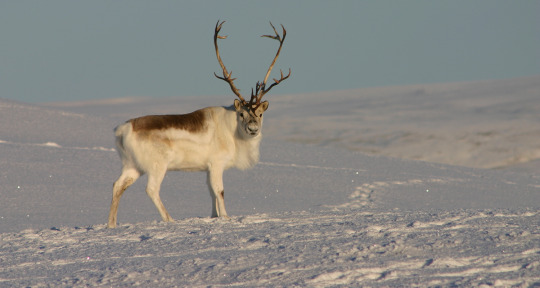
Image taken from Nature Canada.
The Species at Risk Act (SARA), introduced to Canada in 2002, has this subspecies of caribou listed as endangered. Because this species can only be found in the Northwest Territories and Nunavut, it is Canada’s job to protect our current populations. This caribou feeds on arctic vegetation, which is only available for a few months of the summer. During this short period of time, if the females are able to gain enough weight, they would ideally be able to reproduce annually. This rate of reproduction is all dependent on the severity of the passing winters, which vary from year to year. Multiple harsh winters in a row can wipe out an entire herd, whereas multiple mild winters in a row can reduce the caribou’s ability to travel from island to island and lead to a decrease in foraging ability. The warmer winters can lead to population growth, but with limited foraging the population will eventually take a hit. This reduction in population size decreases their genetic diversity, increases the rate of inbreeding and will therefore make them more susceptible to extinction. Other risks for this species include predation, habitat competition and hunting.
2) Blanding’s Turtle (Emydoidea blandingii)

Image taken from Wildlife Preservation Canada.
The Blanding’s Turtle is another species that is listed as endangered under. Approximately 20% of the global abundance can be found in Ontario, Quebec and Nova Scotia. You can find these turtles in lakes, streams, marshes and swamps, as they prefer shallow water with lots of vegetation and nutrients. Females leave the water and look for nesting sites to lay clutches of 3-19 eggs every 2 or 3 years. Natural predators of this species include coyotes, skunks, foxes and racoons raiding the nesting sites. The real threat to the Blanding Turtle comes from increased human activity, as wetlands become more developed and increased traffic heightens the risk of vehicles striking and killing them.
3) Gray Fox (Urocyon cinereoargenteus)

Image taken from the government of Ontario’s website.
The Gray Fox has been listed as a threatened species under SARA and a 2015 assessment from the Committee on the Status of Endangered Wildlife in Canada (COSEWIC). This species of fox is part of the dog family (Canidae) and can be found in Manitoba, Ontario, and Quebec. This nocturnal species feeds on small rodents and vegetable matter, making it easy to inhabit both deciduous forests and the outskirts of cities. The Gray Fox disappeared from Canada during the European settlement and did not return until the 1930’s and 1940’s, as the US populations expanded their ranges northward. Sightings of this fox species is very rare and due to this, the explanation for the decline in its population is unknown. The predicted threats are vehicle collisions, canine distemper, rabies and predation from larger predator species.
I have just told you about three endangered or threated Canadian species that most people don’t know about, but there are still so many more! You may feel like you have no impact on them, but every little bit helps! So, if you see a Gray Fox report your sighting to The Ministry of Natural Resources or if you see a turtle trying to cross the road, help it along in the direction it is travelling. You have an impact and your actions can make a difference!
References
Berrigan, M. (2018, October 15). Blanding's Turtle. Retrieved from https://naturecanada.ca/discover-nature/endangered-species/blandings-turtle/.
Leishman, C. (2018, October 15). Gray Fox. Retrieved from https://naturecanada.ca/discover-nature/endangered-species/gray-fox/.
Peary Caribou. (2018, October 15). Retrieved from https://naturecanada.ca/discover-nature/endangered-species/peary-caribou/.
1 note
·
View note
Text
Original Setting Idea: The Savage City
I've been playing around with an idea for a stonepunk/junglepunk/Lost World-type setting for awhile now (and used parts of it for the Hybrid City setting B_Munro/QuantumBranching covered for me, which I may post here one’a these days). In recent months it's gotten beyond my original intent (partially because I was inspired by some of Bruce's additions), and I figured I'd present it to you lot.
It's set...somewhere. A planet, a continent, the interior of the Earth, I dunno. Regardless, it's hot and a tropical, a mix of lush jungles and swamps, and also volcanoes and geysers all over the place. It is a place where evolution has gone wonky, where a vast multitude of creatures from every corner of the globe that have been extinct for thousands, or millions, or even hundreds of millions of years still thrive, side-by-side with each other, and with creatures that never existed on our world. It is vast and enormous, beautiful and deadly.
And it isn't just animals living there; it's also got people. Primitive people, but people. But not just the people we imagine; because in this place the gifts of thumbs and thought and upright posture isn't exclusive to a single certain lineage of hairless primates. Oh, no. There are a wide assortment of thinking peoples here, and while they may be technologically primitive by modern standards (no one's figured out how to make bronze yet), they're not stupid.
So let's talk about this. Roughly, they can be divided into two groups; the "civilized" peoples, who have cities and agriculture and domesticated animals and complex social systems, and the "tribal" peoples who are hunter-gatherers...with complex social systems.
The most powerful civilization of all are the Small People (ant/bee-people) who while larger than the eusocial insects of our world, are still pretty small. But their numbers and ferocity make up for it. Fortunately, they're largely indifferent to everyone else. and very hostile to each other, so as long as everyone else stays out of their way, they aren't a problem. The other civilized peoples are the Hairy People (ape-people) small in numbers, but vigorous and flexing their muscles, the Winged Peoples (pterosaur-, bird-, and bat-people) who share a common government and disdain for the "landcrawlers", but who's complex politics (necessary to maintain peace and unity between three biologically and culturally heterogeneous species) keep them in check, and the Scaly People (dinosaur people), who's once rapacious expansion has been halted due to internal strife and the need to keep a lid on the people they've already conquered and enslaved; the Shelled People (turtle-people), Feathered People (other dinosaur-people), and Slimy People (frog-people).
Then there are the tribal peoples, the Thin People (humans), Stocky People (Neanderthals), Tall People (bear-people), Tailed People (monkey-people), and Whiskered People (cat-people), alternately ignored, feared, or preyed upn by their more technologically advanced neighbors...until recently, when various warring tribes of each have been united by a brilliant, charismatic leader, who marched his army to the City of Silver, one of the most magnificent cities in the known world, and long time political and economic rival to the City of Gold capital of the Scaly Empire. It was this rivalry that, decades ago, caused them to support a rival claimant to the Imperial Throne, and that support which caused the victorious Scaly Emperor to do nothing when the armies of the Hairy King came to conquer the city.
But with the occupying Hairy People, well, occupied by the Tribal Horde's Siege, the oppressed-for-a-generation Scaly natives took the opportunity to rise up in revolt. With enemies both within and without, the Hairy Governor of the city chose the least bad option for the safety of not only his soldiers, but the many Hairy civilians trapped in the city with them, opening the gates to the Horde, in exchange for not massacring his people. And that's when the Scaly Emperor finally decided to re-take the city, not counting on how much the Silverian Scalies hated him for abandoning them, and thus making common cause with their erstwhile oppressors and the new invaders to keep the city out of his grasping claws.
And so, the city now stands, surprisingly intact for all the fighting, with power shared as per shaky truce between Horde, Hairy, and Scaly, as outsiders circle to see what happens next...
I realize this wasn't clear above, but in my head, the Thin People, Tall People, etc. were all divided into individual tribes as well as by species. IE, there's multiple tribes of Tall People, with their own leaders, their own dialect of the Tall People language, their own version of the Tall People religion, etc. such that some are barley recognizable as sharing common roots.
I was thinking if, in addition to this that, there are also multiple racial phenotypes of each People? So some Thin People would look like Sub-Saharan Africans and some would look like North Europeans, and some would look like Pacific Islanders, etc.
Of course, then I'd have to make-up racial phenotypes for all the other people.
Aaand that's as far as I've gotten. Anyone interested in helping me make this more coherent?
12 notes
·
View notes
Text
31ème weekend and Spring break
Sathurday, March 9, we left home around 8:30pm to go to Florida! I had spent all the evening of Friday packing my stuff and I was excited. We stopped a lot to use the bathrooms because of the kids who always needed to pee haha. The weather was hot and I wore a short and a top. I watched the landschap and the pine trees of Texas with the big fields let place to the lack and swamps of Louisiana. For lunch we stopped on a picnic place with several kiosks andd banks. It was muddy and really windy. We even lost the top of the peanut butter jar. But I found it back in the grass. I also saw a sign with a warning for alligators so after that I didn’t really go in the grass anymore. Because the backseat is not really comfortable with the two kid's seats, with Sharina we took turn to sit there. Around 4pm we stopped in a natural park for a walk in the swamp. It was a special day and there was a rocks and minerals' fair and others. We saw big snakes, turtles and a turtle aligator. The last one was really funny. Then we head to New Orleans where we were supposed to eat but as we arrived it was already almost 7 pm and the two restaurants we tried to go to were requiring at least one hour of waiting. At least we saw the French Quarter with its businesses and crazy people. There was a lot of music and the place was like European cities with Hausman’s style, horse carriage and tramways. Finally we ended up at McDonald's. haha 🍔🍟 With all of it we arrived at our housing at 8:45pm. The house was really pretty and the owner really nice and charming. She lives alone and rent 3 rooms to travelers. She had visited Belgium once. She said it was pretty but really cold! Hihi We then went to bed a little bite exhausted.
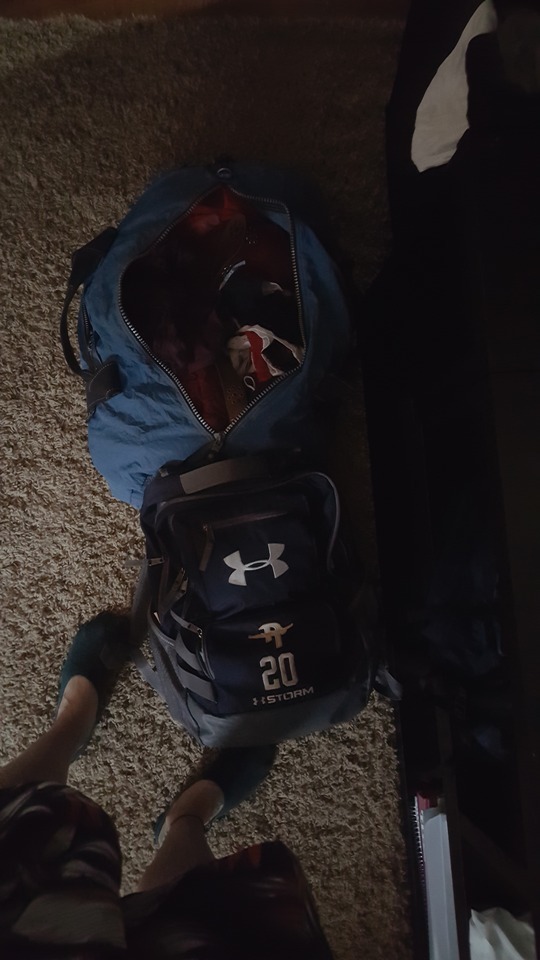
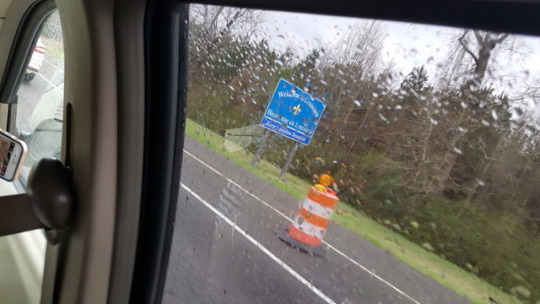
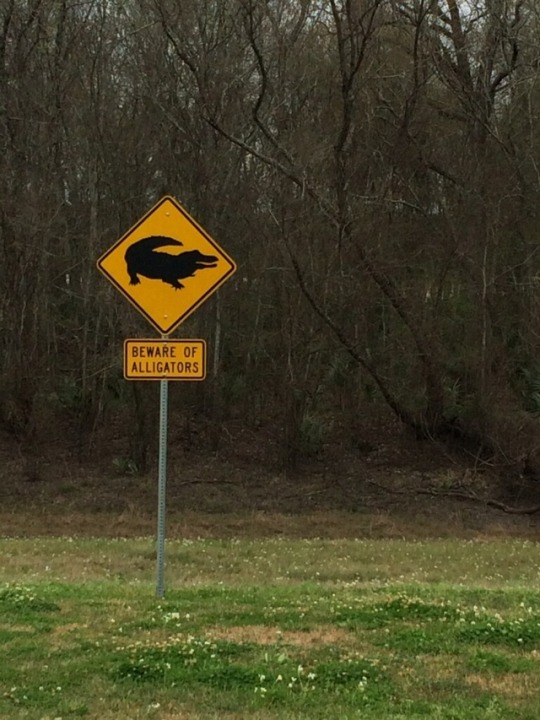
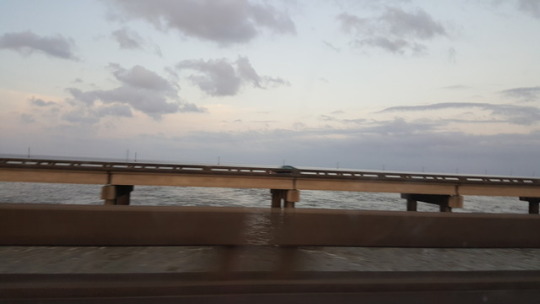
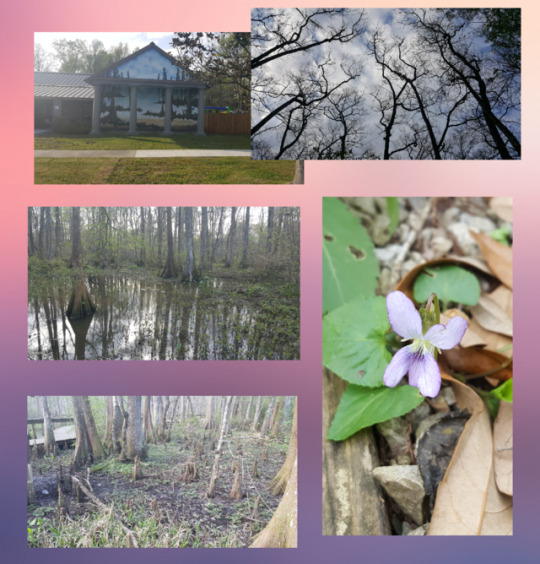

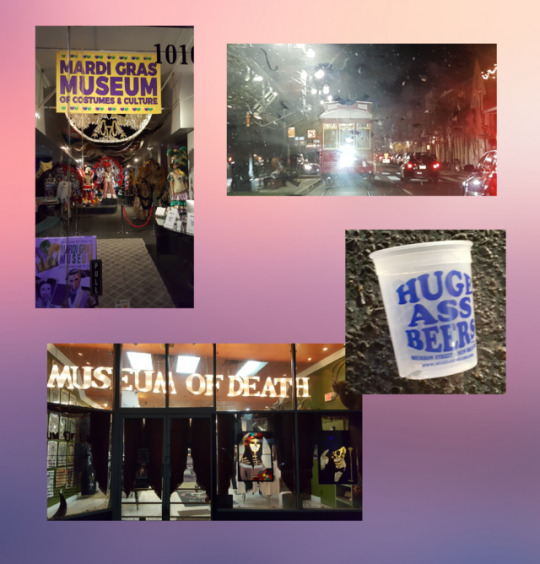

Sunday morning, I struggled to take a shower. I had to kill an innocent mostiquo who didn't want to leave the bad tub then I didn't know how to turn the hot water on. I’ve never understood why there were so many different types of showers. It always drive me crazy. Either I take a cold shower or I ask with a towel around me and the hair semi wet. Anyway. The woman had made some banana bread which became our breakfast. 🍌🍞 Then we started our road trip for the day. We pass the Mississipi state’s limit then the Alabama's one in the morning. We cross a huge lake on a endless bridge. I thought it was the ocean! Then at 10:30am we arrive in Florida! We still had a long way to go but we could see the palmtrees and the sun! We stopped to an other picnic place but only to use the bathroom and take pictures. We had stopped in an other picnic place to eat our home made sandwiches. The kids went to play in the sand where the dogs poo so they caught fleas. Beurk! The afternoon in the car was really long but I watched movies on my tablet, héhé. We ate at Panda express. I took fry rice with sweet chiken. Then after 9 pm we finally arrive at Alex's parents' house! It is located in a closed neighbourhood of retired people. There are 57 houses and only 5 different models. Then we put all our stuffs in the rooms and went to bed. I slept in the same room as my little sister. God! She's only four years old but she made the noise of a machine! She snores really loudly but it's cute. She also woke up in the middle of the night because she had lost her pillow and wanted to wake up her parents. I was like : “ wait!” and I bumped my toe against my bed so it was bloody. Ouille!!! Anyway after finding the pillow I went back to sleep
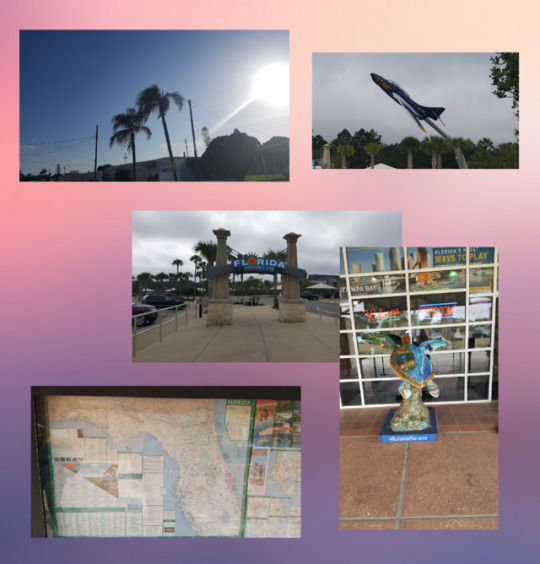

4 notes
·
View notes
Photo
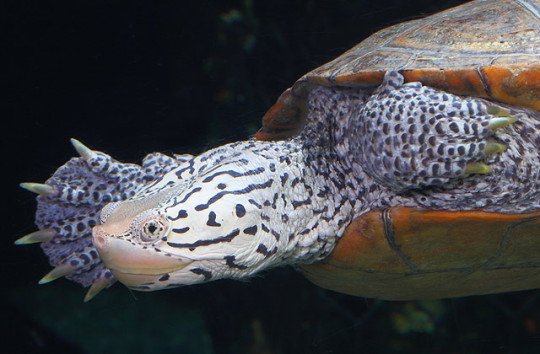

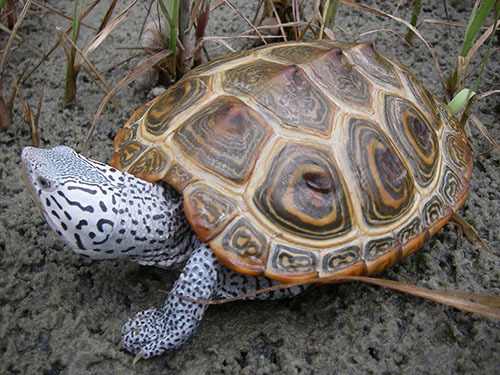

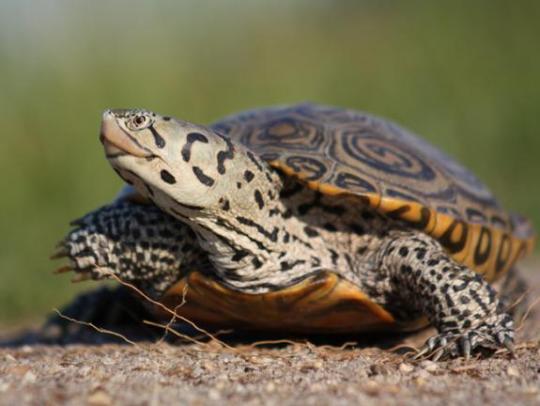
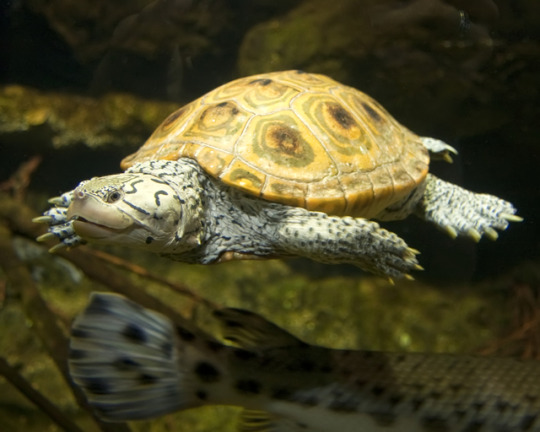
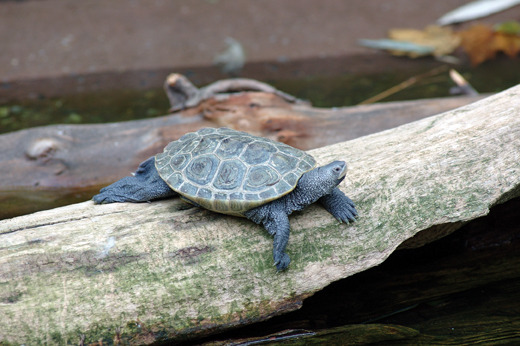
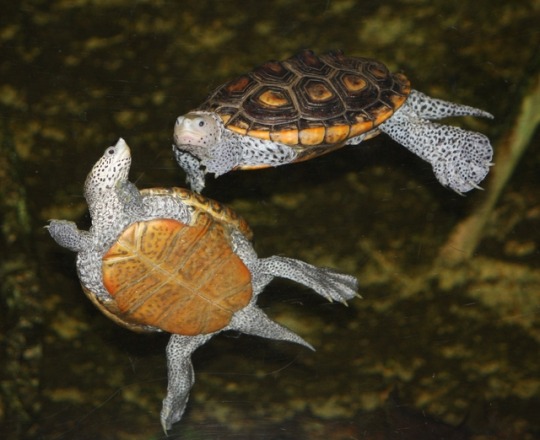
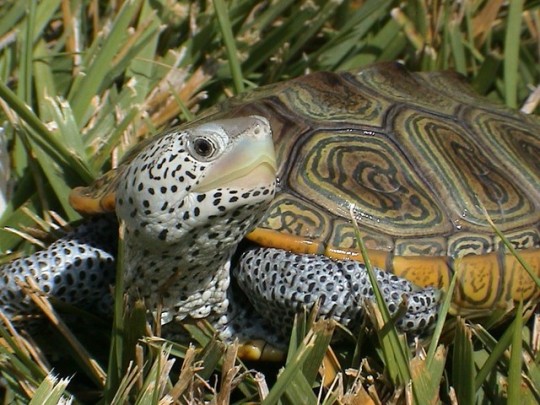
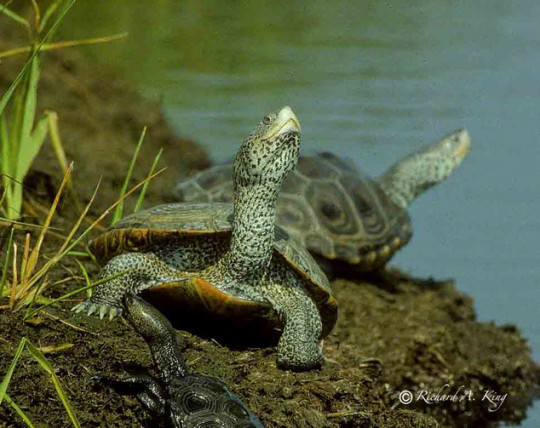
Diamondback Terrapin
The diamondback terrapin (Malaclemys terrapin) or simply terrapin, is a species of turtle native to the brackish coastal tidal marshes of the eastern and southern United States, and in Bermuda. It has one of the largest ranges of all turtles in North America, stretching as far south as the Florida Keys and as far north as Cape Cod. This turtle can survive in freshwater as well as full-strength ocean water but adults prefer intermediate salinities. Terrapins live quite close to shore, unlike sea turtles, which wander far out to sea; however, a population of terrapins on Bermuda has been determined to be self-established (not introduced by humans)
The name "terrapin" is derived from the Algonquian word torope. The name originally was used by early European settlers in North America to describe these brackish-water turtles that inhabited neither freshwater habitats nor the sea. It retains this primary meaning in American English. In British English, however, other semi-aquatic turtle species, such as the red-eared slider, might be called a terrapin.
The common name refers to the diamond pattern on top of its shell (carapace), but the overall pattern and coloration vary greatly. The shell coloring can vary from brown to grey, and its body color can be grey, brown, yellow, or white. All have a unique pattern of wiggly, black markings or spots on their body and head. The diamondback terrapin has large webbed feet.
Terrapins look much like their freshwater relatives, but are well adapted to the near shore marine environment. They have several adaptations that allow them to survive in varying salinities. They can live in full strength salt water for extended periods of time and their skin is largely impermeable to salt. Terrapins have lachrymal salt glands, not present in their relatives, which are used primarily when the turtle is dehydrated. They can distinguish between drinking water of different salinities. Terrapins also exhibit unusual and sophisticated behavior to obtain fresh water, including drinking the freshwater surface layer that can accumulate on top of salt water during rainfall and raising their heads into the air with mouths open to catch falling rain drops.
Seven subspecies are recognized; the Carolina diamondback terrapin, Texas diamondback terrapin, Ornate diamondback terrapin, Mississippi diamondback terrapin, Mangrove diamondback terrapin, Eastern Florida diamondback terrapin, and the Northern diamondback terrapin. The isolated Bermudan population has not been officially assigned to a subspecies, but based on mtDNA it is closely related to the population from the Carolinas.
Diamondback terrapins live in the very narrow strip of coastal habitats on the Atlantic and Gulf coasts of the United States. In most of their range terrapins live in Spartina marshes that are flooded at high tide, but in Florida they also live in mangrove swamps. They have no competition from other turtles, although snapping turtles do occasionally make use of salty marshes. It is unclear why terrapins do not inhabit the upper reaches of rivers within their range, as in captivity they tolerate fresh water. It is possible they are limited by the distribution of their prey. Terrapins tend to live in the same areas for most or all of their lives, and do not make long distance migrations.
Diamondback terrapin diets are not generally well studied, and almost all work on diets has been done in the southeastern part of their range. They eat shrimp, clams, crabs, mussels and other marine invertebrates, especially periwinkle snails. At high densities they may eat enough invertebrates to have ecosystem-level effects, partially because periwinkles can themselves overgraze important marsh plants.
In the 1900s the species was once considered a delicacy to eat and was hunted almost to extinction. The numbers also decreased due to the development of coastal areas and, more recently, wounds from the propellers on motorboats. Another common cause of death is the trapping of the turtles under crabbing and lobster nets. In July 2016, the species was removed from the New Jersey game list and is now listed as non-game with no hunting season. In Connecticut there is no open hunting season for this animal. There is limited protection for terrapins on a state-by-state level throughout its range. There is no national protection except through the Lacey Act, and little international protection. Terrapins are still harvested for food in some states. There is an active casual and professional pet trade in terrapins and it is unknown how many are removed from the wild for this purpose. Some people breed the species in captivity and some color variants are considered especially desirable.
Diamondback terrapins are the only U.S. turtles that inhabit the brackish waters of estuaries, tidal creeks and salt marshes. With a historic range stretching from Massachusetts to Texas, terrapin populations have been severely depleted by land development and other human impacts along the Atlantic coast. Traps used to catch crabs both commercially and privately have commonly caught and drowned many diamondback terrapins, which can result in male-biased populations and local population declines and even extinctions. Terrapin-excluding devices are available to retrofit crab traps; these reduce the number of terrapins captured while having little or no impact on crab capture rates. In some states, these devices are required by law. Terrapins are killed by cars when nesting females cross roads and mortality can be high enough to seriously impact populations. Nests, hatchlings, and sometimes adults are commonly eaten by raccoons, foxes, rats, and many species of birds, especially crows and gulls. Density of these predators are often increased because of their association with humans. Predation rates can be extremely high; predation by raccoons on terrapin nests at Jamaica Bay Wildlife Refuge in New York varied from 92-100% each year from 1998–2008.
Maryland named the diamondback terrapin its official state reptile in 1994. The University of Maryland, College Park has used the species as its nickname (the Maryland Terrapins) and mascot (Testudo) since 1933, and the school newspaper has been named The Diamondback since 1921. The athletic teams are often referred to as "Terps" for short. The terrapin has also been a symbol of the Grateful Dead because of their song "Terrapin Station". Many images of the terrapin dancing with a tambourine appear on posters, T-shirts and other places in Grateful Dead memorabilia.
248 notes
·
View notes
Photo
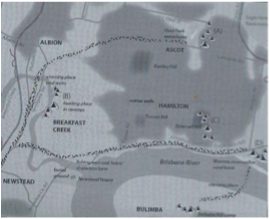
History
Before Northshore was reclaimed by European settlement, it was sandbank, river and swamp. Aboriginal people resided near the banks of the river opposite a large sandbank they called Mooroo-mooroolbin or ‘long nose’(Client Brief, 2020). The area consisted of mudflats, tidal wetlands and large strips of land. On these lands where mangroves, samphire and salt marsh communities, swamp sclerophyll and dry eucalypt forests on ground that was higher from the river. (Client Brief, 2020)
The mangrove and riverine areas were the breeding grounds for many fish including flathead, mullet, bream, crabs and selfish (Client Brief, 2020) . The shallow sandbanks also contained shellfish, fish, dugong and turtle. This is why the area was so vital for the Aboriginal people, as it provided the community with a food source (Client Brief, 2020)
Along with the food supply there was a rich supply of natural resources that supported a permanent or semi-permanent population of the Aboriginal people living in the area (Client Brief, 2020). These areas consisted of freshwater wetlands with fern understoreys or riparian vegetation and expansive forest of grass and eucalypts along the steeper slopes.
The traditional owners of Northshore were the Turrbal language group (Kerkhove, 2015). In figure 1, you can see that there was a camp at Northshore that is close to the site we are working on. Northshore was the scene of tournaments and corroborees, a very important part to the Aboriginal people (Kerkhove, 2015). Figure 1 illustrates that there are pathways to cross the Brisbane river at low tides. The dotted lines shows a pathway close to Northshore.
Client Brief, (2020). The transformation of Northshore 1820–2020. https://blackboard.qut.edu.au/bbcswebdav/pid-8894449-dt-content-rid-37620078_1/courses/KKB285_21se1/Northshore%20History%281%29.pdf
Kerkhove.R, (2015). Aboriginal campsites of greater Brisbane. An historical guide, Brisbane, Boolarong, pp. 54, 68.
0 notes
Text
Audible Sun Born

Sun Born : People of the Morning star (2) (North America's Forgotten Past, #23) by W. Michael Gear
Narrated by: Charlie Thurston
Charlie Thurston has a way of adding life to the characters words on the page. Its a way to bring out the nuances in the beloved story.
Sun Born : People of the Morning star (2) (North America's Forgotten Past, #23) by W. Michael Gear
Sun Born, the second book in the eye opening new series featuring one of the most remarkable archaeological sites in North America will entice readers to learn more about its history and mythology. Cahokia was at its pinnacle over a thousand years ago, it a remarkable rise in trade and prestige would be the focus of Power and North American mythological Gods. The Morning Star is the reborn embodiment of the cross culturally renown Twin God whose influence and connection throughout the North American world laid the foundation of many of the cultures throughout North and Central America. His story of rebirth would spread far and wide and would gain interest in far flung places like Mayan empires. How would the two great powers of the prehistory world share their mutual mythology, and influence? What would be the outcome of these two Cultures colliding in a clandestine nova of subterfuge and intrigue? The internal conflicts within Cahokia is not prepared for the advent of a new Powerful players into the world. The the Four Winds clan, and its contenting conflicts within Cahokia and its neighboring communities are ripe for exploitation. Blue Heron has just the ex-husband who could stir up the entire boiling pot of power and conflict. Can the tenuous connections brought together to save Cahokia in People of the Morning Star find a solution to this new and contemptuous advisory? Can Seven Skull Shield, “that rascal” find a way to save his world, his friends and his people? Lady Night Sun Morning Star will face a new dilemma right on the heels of her new found freedom. Can she sacrifice her ideals, her prestige and her heart in a way that will bring Power into balance? Or will Thirteen Sacred Jaguar the lord of the Itza bring this magnificent city and its culture to heal, and making the Four Winds Clan Neal at his feet?
Character List
Morning Star/ Chunkey Boy: of the Four Winds Clan, the reincarnated Morning Star, the reborn leader of the Four Winds clan, is struggling with personal concepts of his own belief. He has found that power and prestige are not all they are reputed to be. The internal conflict within Cahokia, the Four Winds Clans, and the Earth Clans has worn away the polish of the Ideal.
Lady Night Shadow Star: of the Four Winds Clan, eldest of the Morning Star’s sister. She is said to be a great beauty, and tempestuous young woman of remarkable abilities and passions. Finds that her heart has its own rules, and she is forced to choose between her people and the man she has come reluctantly to love.
Clan Keeper Blue Heron: Keeper of the Four Winds Clan, a strong political leader of the Cahokia world. Her desperate love connections have come to haunt her again. She must face the insufferable heartache and retribution of her ex-husband’s advantageous return.
Fire Cat: High War Chief , Red Wing Nation, slave of Lady Night Shadow Star. He takes an oath to protect Lady Night Shadow Star, but his oath has come at an enormous personal cost.
Seven Skull Shield: thief, and trades man who is a loud, aggressive fighter, and the only possibility to stop the exploits of this invading horde of subterfuge and intrigue. He will find that his connections are frayde by his loyalty to the Four Winds Clan. Hunted and captured by his friends and enemies he must find how to help his new associates survive the coming of a new power to Cahokia.
Tonk’tazi Wind: adviser and living sister to Blue Heron, one of the leading powers in the Four winds Clan. Meets with contingent and trade agreements with other nations.
Nine Strikes: the Little Sun, hereditary second of the rulers of the Natchez. Killed in Cahokia after being honored by the Morning Star for his dancing and costume used at the celebration.
Horn Lance: of the horned serpents house of the Four Winds Clan, Cousin of high chief Green Chunkney, Ex-husband of Blue Heron, exiled for his failed coup of the Four Winds Clan matrons, returned from extended trade adventures that lead to the Mayan civilization and the orchestrator of the massive contemptuous plot to overthrow the Four Winds Clan and rake havoc on his enemies.
Thirteen Sacred Jaguar: son of the yitah Four Fire Shield, one of the multepal, the ruling brothers of the mighty empire of Chichen Itza. Come to Cahokia, to spread the jin the true history of the hero twins, and take this rural outpost to the heights of the Mayan empire.
Lichen: Dreamer as a young girl went to tutor under an Wanderer, the keeper of the Tortoise bundle.
Animal characters/ gods:
Hunga ahuito: the two headed Creator eagle who dwelt above the Rainbow realm in the sky, about the middle waters of the earth, and the four realms of the Underworld clear down to were first woman lived in her cave beneath the roots of the world tree.
First woman or Old-woman-who-never-dies: ruler of the Underworld lives in a cave down below the World tree’s roots. There she dreamed the patterns and Powers of the underworld. He realm was portage by the color red, indicative of fertility, creativity, war and chaos. She had dominion over the waters and plants. She is the daughter of Corn Mother, gave birth to Morning Star and his twin wild One.
Piasa: the Water Panther giving it a female body with serpent tail; sometimes isn't directly named lest it be aroused. (America before the European Invasion pg 48) Piasa, a mythological beast/god that prowled the depths, attaching the people in the swamps and waterways.
Horned serpent: the flying snake “ his voice is sibilant and terrible; Sunlight glistened in tiny rainbows from the scales that armored his skull. The horns that jutted from his head were forked and might have been made to translucent red jasper that almost glowed. Awesome crystalline eyes stared down at me in glittering splendor, like faceted quartz. And in their gaze resonated a Power that sent it waves through my souls. Chevrons dots and dark centered circles decorated the length of his huge body. Each consisted of a symbol of the first days drawn upon his hide by breath giver during the creation. Those mighty wings rose from the center of back and spread above in large patterned feathers almost transparent in the sunlight.” (description from Coming of the storm)
Snapping turtle: to whom fish and frogs answered.
Tie Snakes: who guarded springs, lurked in the depths of the rivers and invoked the rains,
The Thunderbirds mythological gods who make thunder and show messages of the gods.
Morning Star: the good twin, loved by his mother Corn woman and raised by Old-woman who never dies.
Kukul: the powerful Kukulkán (also K'uk'ulkan or K'uk'ul-chon) is a god of Mayan mytholoogy. Kukulkan is known to the K’iche’ group of Maya as Gukumatz. The name Kukulkan means “feathered serpent”, like his Aztec equivalent Quetzacoatl.
The text of the Popol Vuh tells of the Mayan creation myth, followed by stories of a set of heroic twins, Hunahpu and Xbalanqué. The text ends with the mythical history of the K'iche' Kingdom itself, giving its rulers an association with the divine.
0 notes
Photo

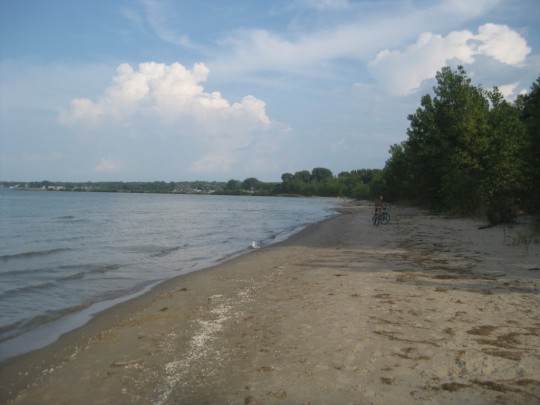
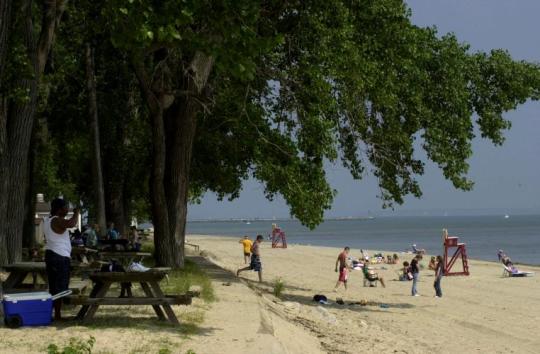

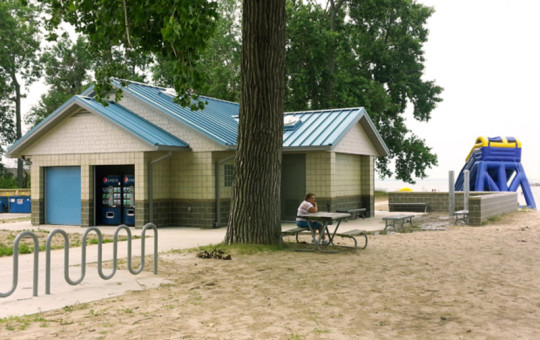

East Harbor State Park
1169 N. Buck Rd.
Lakeside-Marblehead, OH 43440 Ohio’s 1,831-acre East Harbor State Park is located on the shores of Lake Erie, and offers unlimited opportunities for outdoor recreation. This park includes a beach area, campground, marina, seven miles of hiking trails, and wetland wildlife preserve areas. Visitors can enjoy boating, fishing, swimming, picnicking, hunting, camping, and disc golf. Nature enthusiasts will enjoy the abundance of waterfowl, shorebirds, and other species of wildlife found in the park’s scenic wetlands. A thin stretch of sand beach juts north-ward into the waters of Erie, separating Middle Harbor from the lake. Part of this beach was damaged in 1972 by a storm, washing away a large section of the two-mile beach. The current beach is a much smaller area to the north of the park, where swimming is permitted. Four segmented offshore breakwaters have been constructed on the Northern section of beach, to sustain what is left of the sandy shoreline.
Before European settlement, the East Harbor region was home to Native Americans including the Ottawa and Wyandot tribes. Ottawa in native tongue means “trader.” An east-west trail skirted the southern shore of Lake Erie connecting the Pittsburgh and Detroit settlements, and also linked with the famed Scioto Trail from the south. This important area remained occupied by Native Americans until the War of 1812. After the Great Black Swamp was eventually drained, the land became highly productive. Fruits, particularly peaches and grapes, were grown extensively. The grape culture became very successful as a result of quality soil, natural drainage, and suitable climate. Marblehead Lighthouse was erected in 1821 east of the park on the Marblehead Peninsula to aid navigation in and out of Sandusky Bay. Johnson’s Island, on the bay side of the peninsula, was the site of a prison for Confederate soldiers captured during the Civil War. A Confederate cemetery still remains on the island. The region has long been valued as a recreation area. The unique plant and animal life, sandy beaches, marshland, and the lake itself led to the development of East Harbor State Park. The park is one of northern Ohio’s most popular vacation spots.
East Harbor State Park is situated on a peninsula of land stretching into the waters of Lake Erie. A 2-mile-long strip of beaches and dunes separates the harbor from the open waters of the lake. The harbor itself is the former mouth of the Portage River, which once crossed the Catawba Island peninsula to flow into Lake Erie thousands of years ago. Lake Erie was created during a glacial period when massive sheets of ice gouged and scoured the bedrock of Ohio. The glaciers retreated years ago leaving behind deep depressions that filled with meltwater forming the Great Lakes. Evidence of the force of the ice is found throughout the lake area. Small scratches in the rock surface, known as glacial striations, are common, whereas major glacial grooves, such as those found on Kelleys Island, are rare. East Harbor lies on the fringe of Ohio’s prairie marsh zone. These wetlands are remnants of the Great Black Swamp that once covered an area 120 miles long and 30 to 40 miles wide. After a period of intense lumbering and draining in the late 1800s, the swamp was nearly destroyed. Only 10 percent of Ohio’s original wetlands now remain. These wetlands harbor more wildlife than any other type of habitat in Ohio. Reptiles and amphibians are numerous including the green frog, American toad, water snake, fox snake, and painted turtle. Large numbers of ducks, geese, gulls, terns, and other migratory waterfowl delight birdwatchers. Middle Harbor is a birding hotspot where black-crowned night herons, egrets, great blue herons, and other shorebirds find refuge. Furbearers in the park include muskrat and red fox. Hundreds of migrating songbirds rest here before flying north across the lake.
0 notes